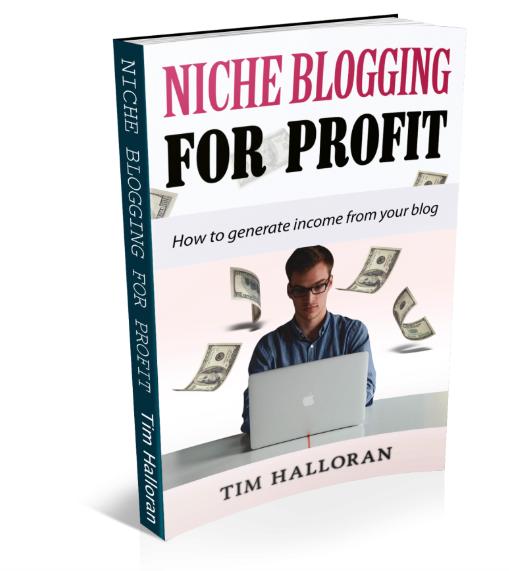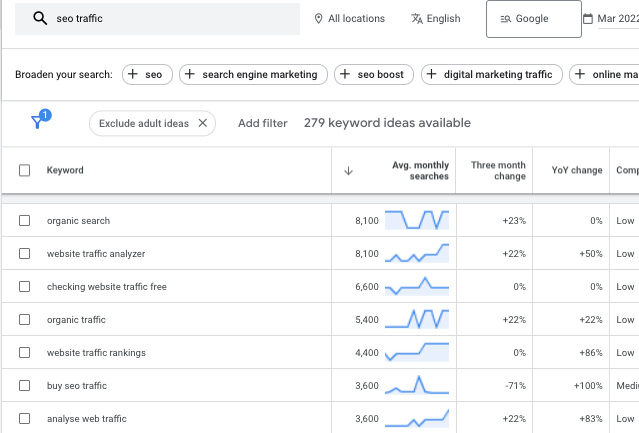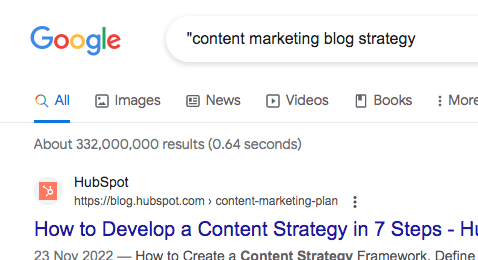A content marketing blog strategy can be used to drive traffic organically from the search engines. There’s over 600 million blogs on the internet, so getting your content found means doing better or working smarter! Do both! Write better content than the rest and work smarter by finding the “low hanging fruit”. What is the low hanging fruit?

Most blog niches are competitive with the most profitable ones usually being the most competitive. But even in a less competitive niche, you still have competition on Google for the coveted prize of a top listing on the first page. That top listing means a tonne of free traffic and that means more customers for your business. But the most competitive terms to rank for are super difficult to rank for. If a top authority domain has hundreds of thousands of back links and has been around for decades, you’ve little to no chance of beating it to the top of page 1 of Google if it has a listing for that term. So what’s the answer? The answer is to find those keywords which are less competitive than the rest – the “low hanging fruit”.
As your site gains authority with Google, you can start aiming a little higher!
Content Marketing Blog Strategy
This strategy starts with Google’s keyword planner. Type your main keyword into the planner and you’ll find a bunch of related terms which you can write content for. The most popular searches however will reveal those keyword combinations which are also the most competitive. Rather than try and compete with the “big boys” for a listing for a 2-3 word phrase, look instead for the long tail keywords with low SEO difficulty.

These tend to be those keywords which have fewer monthly searches. But still, a small amount of a little traffic is worth more than no traffic from a competitive keyword. Those super competitive keywords look really appealing because they have thousands of monthly searches.
Why not write content for them? The answer is you’ll never rank for those keywords because there’s far too much competition. You’ll end up ranking your content on page 10 of Google if you’re lucky! You may get lucky and rank on Bing or Duckduckgo.com. But those search engines get far less traffic than Google. So even after a lot of work creating content for high competition keywords, your results will be poor in terms of free traffic. Instead, target the long tail keywords which have much less competition because you’ll have a greater chance of a ranking!
Content Marketing Blog Strategy – Finding The Long Tail Keywords

Using Google’s keyword planner, click on the Avg. monthly searches tab (second column along) until you see the numbers drop. Then scroll through the results until you find a suitable keyword. Your keyword should relate to your website (and business) in some way. The results above only get 10 (or less) searches a month, so you can scroll along to find keywords with more traffic.
Generally speaking, the more keywords in the chain, the less competition you’ll find on Google for a particular keyword phrase. You can check on Google (on a desktop/laptop computer) for the number of competing websites for any given term. Simply type the keyword into a normal Google search. Also do a phrase match search with the term in “quotes like this”.
You should see a number appear underneath your search and this number denotes the number of competing websites (or web pages) which rank for this term. This will give you an idea of the relative competition before writing your piece of content.

Writing With SEO Tools
While you shouldn’t completely write content only for the robots who are looking at your content, you should also keep them in mind too! SEO (search Engine Optimisation) will help you rank your articles and one of the best tools I use is Yoast SEO – an SEO plugin which helps you write SEO friendly content. This free plugin will help you place keywords in your headings, titles, images and throughout your content in the right amounts.
How people perceive your content is another ranking factor with Google. So you should definitely make an effort to write content which is helpful and easily digested by your readers. Make content easily sharable too. If your readers share your content it’s another signal to Google that your content is share-worthy. You can place social media buttons on your website to make this easier to do. See also the best free blog plugins for WordPress for some other free and cheap plugins I use to help my get more people to my content and rank it better on the search engines.
The more people see you content, the more they will share it, like it, link to it and the better this is for your SEO. But of course it all starts with quality content. If people don’t react supportively to your content, they will click away quickly, won’t like, won’t share and won’t link to it. This is all seen by the watchful eye of the Google bots! So make a good job of your content and it should ultimately grow your SEO standing with Google over time.
Content Promotion
Although you’ve spend a heap of time crafting the perfect piece of content, using your SEO tool to optimise for the search engines and you’re ready for a nice nap, your job still isn’t over! Blog promotion is still your job and relying on a first page listing means you’re handing over control of your traffic to someone else.
Although we would like a top listing to get free traffic to our blog, it’s never guaranteed. So promoting your blog is absolutely essential if you want to make the most out of your efforts. You can of course automate some of this with plugins such as Revive Old Posts and Postplanner.com which allow you to syndicate blog posts as they are published via social media.
The faster you get people to your posts, the more data points Google will have to determine how to view your content. So, if your content is rank-worthy, it’s worth doing the promotion yourself.
Summary
Your content marketing blog strategy should include:
- Keyword research
- Competitor research
- SEO tools
- Quality content creation
- Content promotion
Even after all of this you’re never guaranteed a top listing on page 1 of Google, so it’s definitely worth going after the less competitive terms. Look at the competition on Google for the terms you choose before attempting them. Make sure you create a good promotion strategy yourself and don’t entirely rely on your ranking. Rankings can take some time to appear too, especially on Google, so don’t be impatient.
The idea is to create top quality content first which will stand the test of time. This gives you the best possible chance of getting your content listed. More listings equals more traffic. More traffic equals more shares, likes and backlinks. This improves SEO and ultimately your site will increase its authority with Google. This lets you target the more competitive keywords terms as you go on and you have a better chance of ranking for them too, if you do the same.